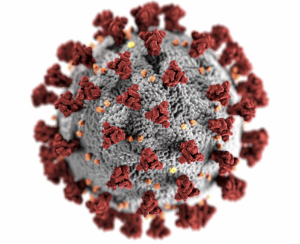5.6 COVID-19

COVID-19 was declared a pandemic by the World Health Organization on March 11, 2020 (Statistics Canada, 2021). Since that time there has been a degree of conflation between coronaviruses and the COVID-19 virus. While Coronaviruses (CoVs) refer to the family of viruses that cause respiratory and intestinal illnesses in humans and animals (What is coronavirus, 2020), Severe Acute Respiratory Syndrome Coronavirus 2 (SARS-CoV-2) is the virus responsible for the outbreak of COVID-19 (UK Research and Innovation, March 2020). The COVID-19 virus leads to acute respiratory distress syndrome (ARDS), which results in dangerously low levels of oxygen in the blood (Washington Post, 2020). As of March 2022, over 6 million people have died from COVID-19 worldwide (Click WHO Coronavirus (COVID-19) Dashboard to see the most recent numbers) (John Hopkins University & Medicine, 2022). As new strains emerge (e.g., Delta, Omicron), the world continues to be impacted by the virus, as well as the restrictions that follow it.
Click the links below to learn more about the impact of the COVID-19 pandemic:
COVID-19 in Canada: A One-year Update on Social and Economic Impacts (Read Pages 10-14 & 16-27).
How to Heal the ‘Mass Trauma’ Of COVID-19
VIDEO: How COVID-19’s Death Toll and Social Impact Compares to Past U.S. Pandemics
In news coverage by PBS News Hour, the following video describes the death toll from the COVID pandemic and how it has surpassed the number of lives lost to the 1918 Spanish Flu.

